Mastering Toilet Snaking: Tools and Techniques
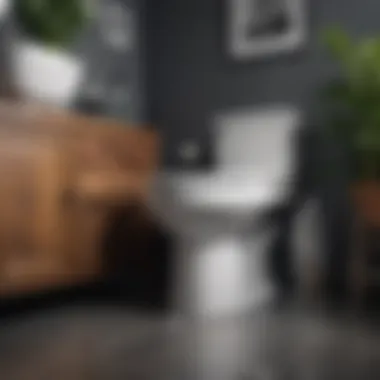
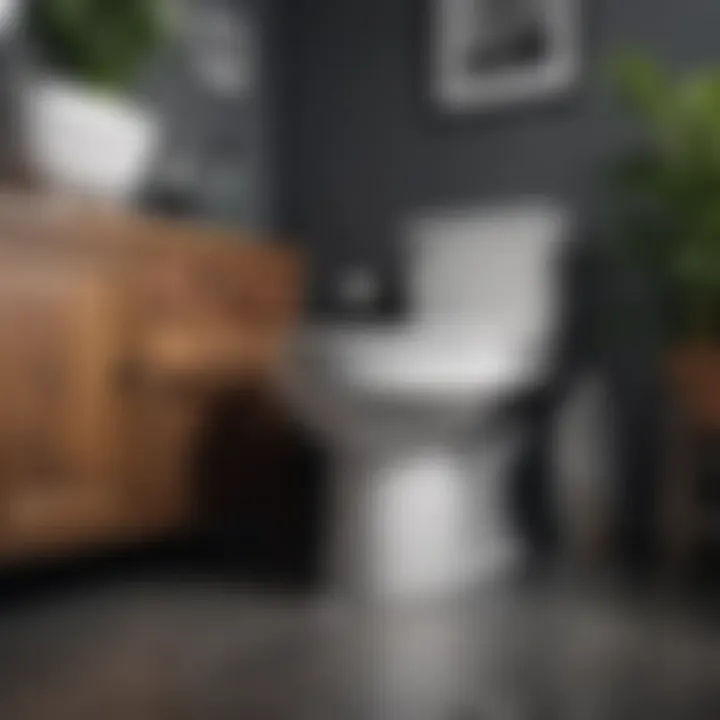
Intro
Homeowners often face the unwelcome situation of a clogged toilet. The need to tackle this issue can be daunting. However, understanding the techniques and tools involved in snaking a toilet can empower anyone to manage their plumbing issues effectively. This guide focuses on methods to clear a toilet clog, providing essential knowledge for the DIY enthusiast.
In this article, we will explore the fundamentals and advanced techniques for snaking a toilet. We will discuss the necessary tools, step-by-step processes, and even common troubleshooting tips. This comprehensive guide aims to equip readers with practical skills to maintain their plumbing system efficiently.
Techniques for Snaking a Toilet
Understanding the Basics
Snaking a toilet involves inserting a flexible tool, known as a toilet auger or snake, to break up and remove blockages. This task can range from simple to complex, depending on the severity of the clog. The key is to approach the situation with care and attention. Familiarity with the toilet's components will aid in effective snaking.
Preparing to Snake
Before starting, gather all the necessary tools. Having everything on hand simplifies the process. Key tools include:
- Toilet auger
- Plumber’s gloves
- Old towels
- Bucket (for excess water)
Ensure the working area is clean to avoid making a mess.
Step-by-Step Procedure
Here’s how to properly use a toilet auger:
- Put on plumber’s gloves: Protect your hands from germs.
- Remove excess water: If there is a lot of water in the toilet, reduce it using a bucket. This prevents overflow later.
- Insert the auger: Carefully feed the toilet auger into the drain. Turn the handle clockwise.
- Feel for resistance: When you encounter resistance, it indicates the clog. Continue twisting to break it up.
- Retract the auger: Pull the auger back slowly, bringing any debris with it.
- Flush the toilet: After snaking, flush to ensure all clogs are cleared.
Tools of the Trade
Using the right tools makes the process much easier. Key tools include:
- Toilet Auger: Specifically designed for toilets; has a long cable for reaching deep into pipes.
- Plumber’s Snake: Versatile tool suitable for various clogs, not just toilets.
- Flange Plunger: Unlike regular plungers, it has a flange to create better suction in toilets.
Troubleshooting Common Issues
Sometimes, even skilled attempts may not clear the clog. Here are solutions for common scenarios:
- Persistent Clogs: If the toilet remains clogged after several attempts, consider a professional plumber.
- Toilet Overflowing: Quickly turn off the water supply to prevent flooding.
- Equipment Breakage: Be cautious. Using too much force can damage the toilet's internals.
"Regular maintenance and timely action can prevent serious plumbing issues."
Culmination
Being informed about toilet snaking is invaluable. This skill not only addresses immediate plumbing concerns but also fosters confidence in home maintenance. Understanding the tools, methods, and troubleshooting tips discussed in this guide will enable readers to handle plumbing challenges effectively.
Understanding Toilet Clogs
Toilet clogs are a common household issue that can lead to significant inconvenience and potential plumbing problems. Grasping the root causes and acknowledging the signs of a clogged toilet is essential for effective maintenance. Identifying these aspects can help homeowners address clogs promptly, avoiding further complications and costly repairs.
Common Causes of Toilet Clogs
Understanding the reasons behind toilet clogs can aid residents in preventing these occurrences. Some primary causes include:
- Excessive Toilet Paper Use: One of the most frequent causes is the overuse of toilet paper. Toilets have a limited capacity to break down materials, and using more paper than recommended can lead to blockages.
- Foreign Objects: Sometimes, items such as toys, sanitary products, or wipes are accidentally flushed. These items do not disintegrate like toilet paper and can create significant blockages.
- Tree Roots: In certain cases, tree roots may infiltrate sewer lines and interact with waste pathways, causing clogs far downstream.
- Old Plumbing: Aging pipes can develop narrowed passageways due to corrosion, leading to slower drainage and clogs.
Being aware of these causes can help in choosing the right practices and habits that keep toilets functioning smoothly.
Signs that Indicate a Clogged Toilet
Recognizing the signs of a clogged toilet early can prevent more severe plumbing issues. Here are key indications:
- Slow Draining: If the toilet takes longer than usual to drain, it might signal a developing clog.
- Gurgling Sound: Unusual sounds, such as gurgling, can indicate air trapped in the plumbing, which often correlates with a blockage.
- Water Levels Fluctuating: If the water level remains higher than normal or occasionally drops unexpectedly, this may suggest a clog.
- Frequent Backups: Repeated incidents of backup, even if they seem minor, often indicate a blockage is forming.
Actively monitoring these signs can help in taking proactive measures, mitigating the need for hassle when a clog becomes a real issue.
Prologue to Toilet Snaking
Toilet snaking is a vital skill for homeowners and renters alike. The ability to effectively clear a clog can save time and frustration while maintaining a functional household. Understanding how snaking works is essential for anyone who wishes to manage minor plumbing issues.
One significant aspect is that snaking is often a cost-effective solution compared to calling a plumber. It empowers individuals to address clogs without immediate professional help. This can lead to both financial savings and a sense of accomplishment. Moreover, mastering this technique can provide insights into basic plumbing to prevent further issues.
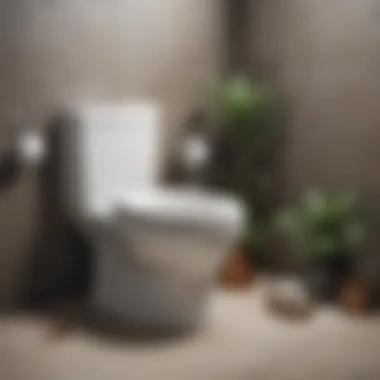
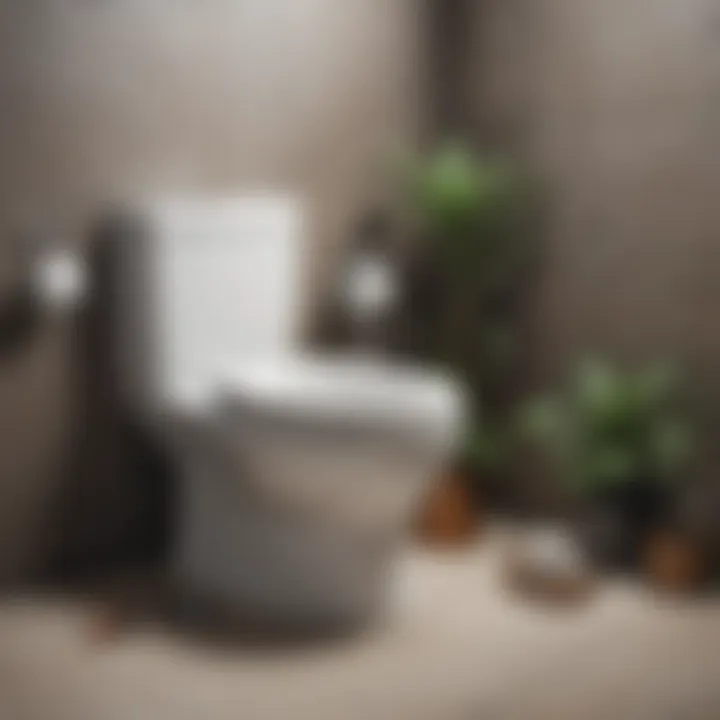
Proper understanding surrounding snaking also aids in identifying when a problem requires professional intervention. Recognizing the limits of what can be accomplished DIY can help avoid potential complications. Below are relevant points addressed in the following sections.
- Definition of snaking and its significance.
- Situations when using a snake is appropriate.
- Essential tools involved in the snaking process.
Overall, the knowledge acquired from this section will better prepare readers for the practical applications outlined in this guide.
What is Snaking?
Snaking refers to the method of using a flexible tool, usually a steel or polymer cable, to clear blockages in a toilet's drainage system. The snake is inserted into the toilet drain to penetrate and dislodge clogs. It is a practical solution that eliminates the reliance on chemical drain cleaners, which can be harmful to pipes and the environment.
When using a snake, the user rotates it to navigate through bends in the plumbing. By doing so, it reaches the obstruction, allowing it to break apart or pull the clog back. Many people choose to snake a toilet rather than resort to other methods, as it is less invasive and does not require removing the toilet.
When to Use a Snake
Deciding when to use a snake depends on various factors. Here are some scenarios when snaking is advisable:
- Frequent clogs: If a toilet frequently backs up, it may indicate a deeper issue that snaking could address.
- Foul odors: Bad smells can result from stagnant water due to clogs. Snaking can help alleviate these issues.
- Partial drainage: If water drains slowly but does not completely back up, snaking may improve flow.
It is important to note that snaking should not be the first method attempted. Other simple strategies may include using a plunger or attempting to flush with hot water. However, if those methods fail, it is time to consider using a snake as an effective solution.
Essential Tools for Snaking a Toilet
When tackling a toilet clog, having the right tools is essential. In this section, we explore the various tools needed to effectively snake a toilet. Knowing these tools not only makes the process smoother, but it also ensures that you can resolve common plumbing issues efficiently.
A toilet snake, or auger, is the most critical tool for this task. Without it, you may struggle to reach deep clogs that a plunger cannot dislodge. Having a good quality snake ensures you can penetrate the drain lines and effectively remove blockages. Additionally, understanding the various types of snakes available can help in choosing the right one for your situation.
Other tools, such as a plumber's snake and a drain auger, offer different capabilities. Each of these tools serves a specific purpose and excels in certain scenarios. For example, a toilet auger is designed specifically for navigating toilet bends, while a general snake may be longer and used for other drains.
It's also beneficial to have gloves and protective eyewear on hand. Safety should be your priority while working with potential waste and sharp tools. These items create a barrier against harmful materials and provide comfort during the task.
Lastly, having basic tools like a bucket can help catch any overflow or debris during the snaking process. This makes cleanup easier and keeps your work area tidy.
In summary, proper tools are essential for efficiently addressing toilet clogs. They allow for effective troubleshooting while ensuring safety during maintenance. It is imperative to not only have these tools but also to understand their specific functions and uses.
Types of Toilet Snakes
Toilet snakes can be separated mainly into two types: manual snakes and electric snakes. Both types have distinct advantages depending on the situation.
- Manual Snakes: These are typically hand-operated and very straightforward. Many homeowners find manual snakes easy to use. They work well for minor clogs and usually come with a crank handle to rotate the snake into the toilet bowl. A popular choice among DIY enthusiasts, they provide good control during use.
- Electric Snakes: When dealing with severe or recurring clogs, an electric snake may be necessary. These are powered tools that can save time and effort. They are useful for larger plumbing systems or deep clogs that a manual snake cannot handle. However, they require a bit of training and caution due to their power.
Having a clear understanding of these snakes can influence how effectively you can clear a blockage. Choosing the wrong type can lead to frustration and unnecessary work.
Additional Plumbing Tools
Besides toilet snakes, there are some additional tools that support the snaking process. Here are a few of the most valuable items:
- Plunger: A good-quality plunger should always be your first line of defense against a clog. It creates suction that can often clear minor blockages before resorting to a snake.
- Drain Camera: A drain camera can be helpful for visual inspections of the plumbing. It allows you to see the condition of pipes and identify the location of the clog without opening up any walls or floors.
- Pipe Wrench: This tool can assist in loosening any tight fittings that may contribute to a clog. It is particularly useful when dealing with aged plumbing systems.
- Drain Cleaner: Although chemical solutions can be effective, they should be used with caution. It's often better to use them sparingly to avoid damage to plumbing.
By utilizing these tools effectively and familiarizing yourself with each one, you increase the chances of successfully tackling your plumbing issues. The blend of proper preparation and the right tools creates a positive approach to maintaining a clog-free toilet.
Step-by-Step Guide to Snaking a Toilet
Understanding the process of snaking a toilet is vital for any homeowner or renter faced with a clog. A clear and methodical approach not only restores functionality but also prevents future issues. This guide presents a structured view, breaking down the process into manageable steps, resulting in more effective toilet maintenance.
Preparation Before Snaking
Before starting, it’s important to prepare your workspace effectively. Begin by gathering your tools. A toilet snake is essential. Other supplies include rubber gloves, a bucket, towels, and possibly a flashlight. Ensure you have these items within reach, as this will streamline the process.
Evaluate the surrounding area as well. Remove any items that might interfere. This might include toilet tank covers or decorative items on the bathroom counter. Having a clean workspace reduces the chance of accidents or disruptions.
Turning off the water supply to the toilet is also a prudent step. This can often be done by locating the shutoff valve, typically situated behind or to the side of the toilet. Once you turn it off, flush the toilet to remove excess water from the bowl. This will make it easier for the snake to navigate and prevent overflow during the procedure. A dry environment enhances safety and efficiency.
Inserting the Snake
Now, it’s time to insert the snake into the toilet. Carefully guide the snake into the drain opening. Be gentle but firm, as applying too much force can damage the toilet. Insert the snake slowly, allowing it to bend naturally with the curvature of the toilet’s drain.
As you insert the snake, observe any resistance. If you feel a blockage, do not push forcefully. Instead, twist the handle of the snake gently to help it penetrate the blockage. You might notice the snake making certain sounds as it encounters debris. Pay attention to these signals; they indicate your progress.

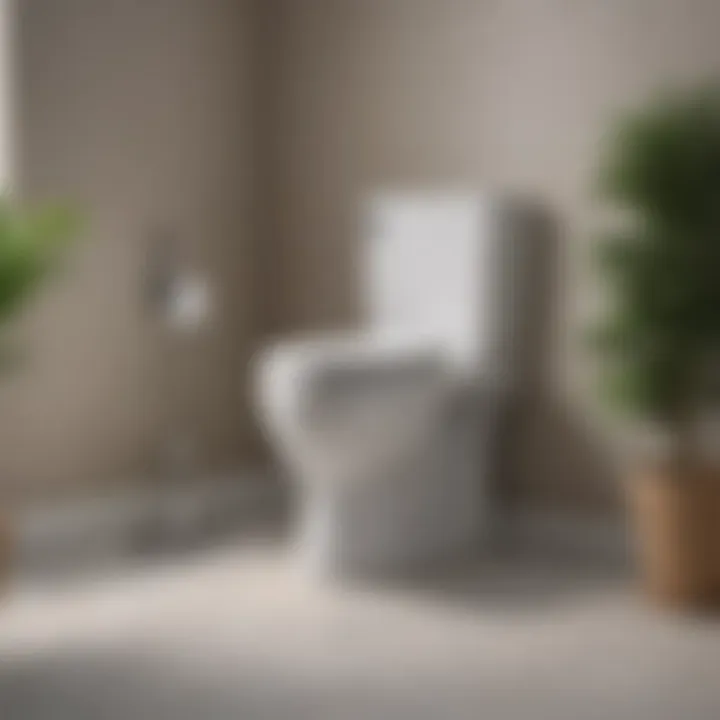
Navigating the Drain
Once the snake is inside the drain, the next step is navigating the drain. This involves some knowledge of where the clogs might form. Toilets consist of various curves and turns. You should gently push the snake forward while simultaneously rotating it. This action helps the snake break through or snag the clog.
If the blockage is stubborn, you might need to retract the snake a little, then attempt to push the obstruction with more force. Clogs might consist of toilet paper, foreign objects, or even buildup over time. Having patience is key. Rushing through this step can lead to frustration or damaging the plumbing.
Retrieving the Snake
After you feel the snake has successfully navigated through the blockage, it’s time to retrieve it. Slowly pull the snake back out, maintaining a steady pace to avoid splashing. Watch closely for any debris that may come out with it. This might include toilet paper, waste, or other materials stuck in the drain.
Once the snake is out, it’s wise to clean it thoroughly. Use a hose or large bucket to rinse it off. This prevents the transfer of bacteria or odors back into your bathroom or home.
At this point, check the toilet to ensure water drains effectively. If water flows freely without back-ups, you have successfully cleared the clog. However, if problems persist, the next sections will guide you through further troubleshooting and maintenance.
Post-Snaking Procedures
After snaking a toilet, the importance of implementing post-snaking procedures cannot be overstated. These steps ensure that the plumbing system functions correctly and helps prevent future clogs. It is not just about clearing the blockage; monitoring the toilet’s performance and maintaining cleanliness are crucial aspects of effective plumbing care.
Testing the Toilet
Once you have finished snaking the toilet, checking its functionality is vital. Flush the toilet multiple times to ensure that water flows without interruption. Listen for unusual sounds such as gurgling or hissing, which may indicate lingering issues in the drain line. If water takes longer to drain compared to before, the clog may not be completely cleared. Testing creates a baseline for the toilet’s performance and allows for early detection of any remaining problems.
It is essential to be thorough in this step. A properly functioning toilet is crucial for daily comfort and hygiene.
When testing the toilet, consider the following:
- Flush Rate: Observe how quickly the toilet refills. A slow refill may indicate issues.
- Water Levels: Ensure the water levels are appropriate after flushing. Adjust the float if required.
- Visual Inspection: Look for signs of leaks or overflow. An unnoticed issue can lead to more significant problems later.
Taking a few minutes for this assessment can save time and effort in the long run.
Cleaning Tools and Area
Cleaning your tools and the area after snaking the toilet is necessary for hygiene and maintaining equipment longevity. The materials you use during the snaking process can come into contact with waste and bacteria. Therefore, proper cleaning is critical to both your health and to prevent contamination in your home.
Start by cleaning the plumbing snake. Use warm, soapy water to scrub the entire snake, paying particular attention to the coils. Ensure you rinse it thoroughly before storing it away. Here are some additional key steps:
- Disinfect: Utilize a diluted bleach solution or a disinfectant cleaner to wipe down the snake and other tools used.
- Storage: Store tools in a dry, safe location. Avoid damp areas that could encourage rust or mold.
- Area Cleaning: Clean the area around the toilet using disinfecting wipes or sprays. A clean environment minimizes health risks related to bacteria.
Maintaining cleanliness not only enhances the lifespan of your tools but also contributes to a safer home environment. Regular cleaning helps develop proactive habits that can save significant effort and time in future plumbing situations.
Troubleshooting Common Problems
Addressing plumbing issues, particularly related to toilet clogs, is a task most homeowners face at some point. Understanding how to troubleshoot common problems is vital for effective home maintenance. Proper techniques can save time and prevent further damage. Often mishandled, troubleshooting offers an opportunity to enhance one’s knowledge about plumbing systems. Here, we delve into two common issues that may arise after snaking your toilet: persistent clogs and toilet overflows.
Dealing with Persistent Clogs
Encountering a persistent clog despite attempts to snake can be frustrating. It often indicates a more significant issue within the plumbing system, such as a foreign object lodged further down the pipes or a buildup of growth that requires more invasive cleaning solutions. Here are some steps you can take:
- Re-evaluate Techniques: Ensure that the snake was inserted correctly and that all proper steps were followed. Failure to navigate the curve within the toilet can lead to ineffective removal of the clog.
- Assess the Tools Used: Sometimes, the chosen snake may not be adequate. A smaller snake may struggle with larger blockages. Consider utilizing a toilet auger, which is specifically designed for toilets and has a flexible, sturdy build.
- Add Safety: If you have been unsuccessful and continue to face persistent clogs, stop snaking to avoid damage. Instead, use a natural enzymatic cleaner as an alternative, which can help break down organic matter safely.
In some cases, if persistent clogs continue, it is time to call a professional. Regular issues can signal that your plumbing warrants inspection for systemic issues, like sewer line blockages or other complications.
What to Do if the Toilet Overflows
Toilet overflows can be alarming and create more than just a mess. They can lead to water damage and the potential for mold growth if not addressed quickly. Here are essential steps to take when faced with an overflow:
- Immediate Action: First, stop the toilet from overflowing by turning off the water supply. Locate the shut-off valve behind the toilet and turn it clockwise. This immediate step is crucial to prevent further flooding.
- Use a Plunger: Once the water is contained, use a plunger to try to resolve the clog. Make sure to use a full stroke and create a good seal around the drain. If the plunger does not work, wait for the water to settle before trying the snake again.
- Assessing Other Factors: If overflow occurs frequently, inspect the flapper and fill valve mechanisms inside your toilet tank. Issues with these components can also contribute to improper function, leading to overflow situations.
Remember: Small leaks can escalate into bigger problems. If overflowing becomes a common occurrence, do not delay in seeking professional help to evaluate your plumbing setup.
Ultimately, troubleshooting requires not only action but also a careful assessment of the situation. By understanding the complexities around these common problems, homeowners can better maintain their toilet systems. Effective maintenance minimizes more extensive repairs and maximizes efficiency in plumbing use.
When to Call a Professional
Understanding when to call a professional plumber is critical for effective plumbing management. While many homeowners and DIY enthusiasts may feel confident tackling minor clogs or issues themselves, certain situations necessitate the expertise and experience of a trained professional. Home plumbing is intricate, and often the true source of a problem is not immediately obvious. Efforts to rectify an issue without adequate knowledge can lead to further complications, potentially increasing repair costs.
It is essential to evaluate the situation calmly. If attempts to snake a toilet result in no improvement, or if clogs reoccur frequently, it may indicate deeper plumbing issues within the system. In such cases, a professional diagnosis can save time and effort. Homeowners should also consider the level of risk involved in managing complex plumbing problems, as improper handling can cause damage that requires extensive repairs.
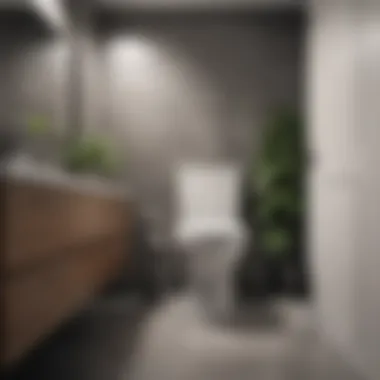
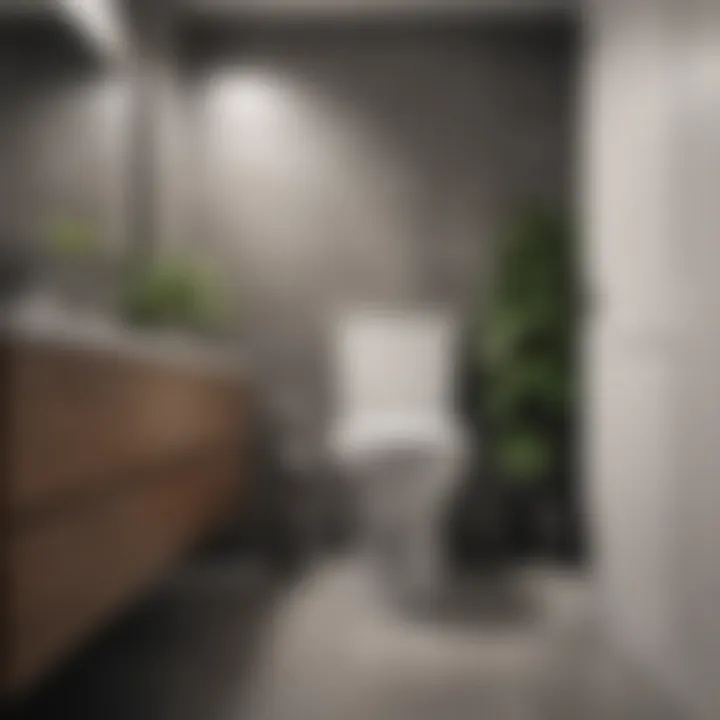
Indicators of Serious Issues
Understanding the indicators that suggest professional intervention is necessary can prevent minor annoyances from becoming significant headaches. Look for the following signs:
- Multiple Clogged Fixtures: If your toilet is not the only fixture exhibiting issues, this might point towards a blockage in the main sewer line.
- Slow Draining: If water drains slowly or not at all in multiple sinks or tubs, it may suggest a considerable blockage that will need specialized tools to resolve.
- Unpleasant Odors: Persistent foul odors could indicate sewage backup. This issue demands immediate attention.
- Frequent Clogs: Routine clogs, especially if occurring after snaking, may mean that the underlying problem is deeper than you can address effectively.
"Ignoring signs of a significant plumbing issue will often lead to more costly repairs later."
Comparing DIY and Professional Solutions
Deciding between handling plumbing issues personally or hiring a professional involves weighing several factors. DIY methods can often be tempting due to lower upfront costs. Yet, there are significant considerations to keep in mind:
- Time and Effort: DIY solutions can be time-consuming. Homeowners must invest time in researching, gathering tools, and executing repairs.
- Experience Level: Professionals bring a wealth of experience. They will quickly diagnose the problem and execute repairs efficiently compared to the learning curve associated with DIY.
- Risk of Damage: Inadequate handling of plumbing can lead to damage that may exacerbate the situation, requiring more extensive and costly repairs.
- Long-Term Solutions: A professional will likely address the root cause, ensuring the issue does not reoccur, saving time and frustration in the future.
Overall, while DIY plumbing solutions can be cost-effective for minor issues, engaging a professional is often the best course for complicated problems, ensuring safety and thorough resolution.
Safety Considerations
In any plumbing task, safety must be a top priority. Snaking a toilet, while manageable, poses specific risks to both the individual performing the task and the plumbing system itself. Recognizing these hazards and taking appropriate measures can prevent accidents and unwanted damage.
Protective Gear
Before attempting to snake a toilet, it is essential to wear appropriate protective gear. This includes:
- Rubber gloves: These protect your hands from harmful bacteria and chemicals often found in sewage. Dexterity is vital, so choose gloves that fit well.
- Safety goggles: Protect your eyes from potential splashes or debris while working with the snake. Eye safety is often overlooked, but goggles can prevent serious injuries.
- Face mask: In case of strong smells or airborne pathogens, wearing a mask can be beneficial. It helps maintain cleaner air while performing the task.
Wearing this gear is not just a precaution; it ensures a more comfortable and secure working environment.
Potential Hazards
Several hazards can arise during the toilet snaking process. Understanding these can guide better safety practices. Here are some common risks:
- Sewage exposure: Handling plumbing equipment can expose you to raw sewage. This can lead to infections or serious health concerns if proper hygiene is not observed.
- Injuries from tools: Toilet snakes come with metal ends that can cause cuts or puncture wounds. Always ensure your hands and body are clear of the snake’s movement path.
- Chemical exposures: If you have used chemical drain cleaners previously, residues may still linger. Always rinse chemicals thoroughly and use with care.
Proper safety measures during plumbing tasks not only protect the individual but also maintain the integrity of the plumbing system itself.
Awareness and preparedness are fundamental in reducing the risks associated with snaking a toilet. Investing a little time in safety can make the entire process smoother and less stressful.
Maintaining a Clog-Free Toilet
Maintaining a clog-free toilet is crucial for both functionality and hygiene within the home. A well-functioning toilet contributes significantly to the overall plumbing system and reduces the chances of experiencing an inconvenient clog. Regular maintenance can save homeowners from costly repairs, and unpleasant situations, and ensure that the plumbing operates smoothly. The art of prevention is often overlooked, but understanding how to maintain a toilet can lead to less frequent issues and enhance the lifespan of the toilet itself.
Regular Maintenance Tips
Regular maintenance involves a few straightforward practices that can be easily integrated into a homeowner's routine. Keeping a toilet clean internally and externally reduces the risk of clogs and promotes better hygiene:
- Routine Inspection: Check visual signs of wear, leaks, or corrosion around the toilet. These are early indicators of potential problems.
- Flushing System: Test the flush to see if it operates effectively. A weak flush can lead to residue building up within the trap, which can eventually result in clogs.
- Cleaning the Toilet: Use appropriate cleaning solutions designed for toilets. Regular cleaning not only keeps it sanitary but also prevents mineral build-up.
- Weekly Maintenance: Develop a habit of flushing the toilet with hot water mixed with vinegar once a week. This can help dissolve minor build-up and keep your pipes clear.
These practices may require minor effort, yet the rewards are substantial in avoiding the hassle of emergency plumbing situations.
Best Practices for Toilet Use
Being mindful of how a toilet is used plays a crucial role in keeping it clog-free. Here are some best practices:
- Limit Paper Use: Use minimal toilet paper and avoid flushing excessive amounts at once. Instead, flush multiple times if necessary.
- Avoid Flushing Foreign Objects: Items such as sanitary products, wet wipes, and dental floss should never be flushed. Only human waste and toilet paper should go down the toilet.
- Education for Guests: If hosting, educate guests on toilet use. Provide clear instructions if necessary about what should and should not be flushed.
- Regular Communication: Talk to household members about the importance of proper toilet use. Create awareness around the types of materials that can lead to clogs.
By implementing these best practices, the risk of clogs can be significantly reduced. Regular checks and mindful use contribute heavily to the health of your plumbing system.
Maintaining a clog-free toilet not only enhances your plumbing system but also promotes a cleaner and healthier home environment.
End: An Ongoing Commitment to Plumbing Care
In the realm of home maintenance, plumbing care often remains an underappreciated facet. This article underscores the critical nature of maintaining your toilet system, particularly through the effective use of snaking. Regular attention to this essential fixture not only enhances functionality but also extends its lifespan, promoting overall household hygiene.
The techniques outlined here demonstrate that a proactive approach to plumbing care can prevent larger, costly issues down the line. Homeowners and renters alike can benefit from familiarizing themselves with the tools and practices associated with toilet snaking. With knowledge comes empowerment; individuals can address minor clogs effectively and confidently.
Regular maintenance can cultivate a seamless relationship with your plumbing system. Testing your toilet after occasional snaking helps to ensure continued operational efficiency. Engaging in preventative measures such as mindful use and periodic inspections allows for swift identification of potential problems before they escalate.
Furthermore, a commitment to plumbing care encourages a sense of responsibility within the home. By educating oneself about the signs of clogs and the appropriate responses, every individual contributes to a cleaner and more efficient living environment. While it is essential to understand when to seek professional help, being equipped with the knowledge of DIY techniques fosters a practical mindset.
In summary, effective plumbing care is not merely reactive but must be an ongoing commitment. From snaking techniques to regular maintenance practices, each step strengthens not just the toilet’s effectiveness, but also enhances one’s understanding of household plumbing systems. The investment in time and effort in this area pays dividends through a smoother, more functional home life.
"An ounce of prevention is worth a pound of cure." This axiom holds particularly true in the realm of plumbing, where small issues can snowball into significant challenges if left unaddressed.
Ultimately, maintaining a clog-free toilet transcends the act of simply dealing with one problem as it arises. It embodies a comprehensive dedication to ensuring that the entire plumbing system functions optimally. This not only instills confidence in a homeowner’s ability but also preserves the comfort and efficiency of daily life.



